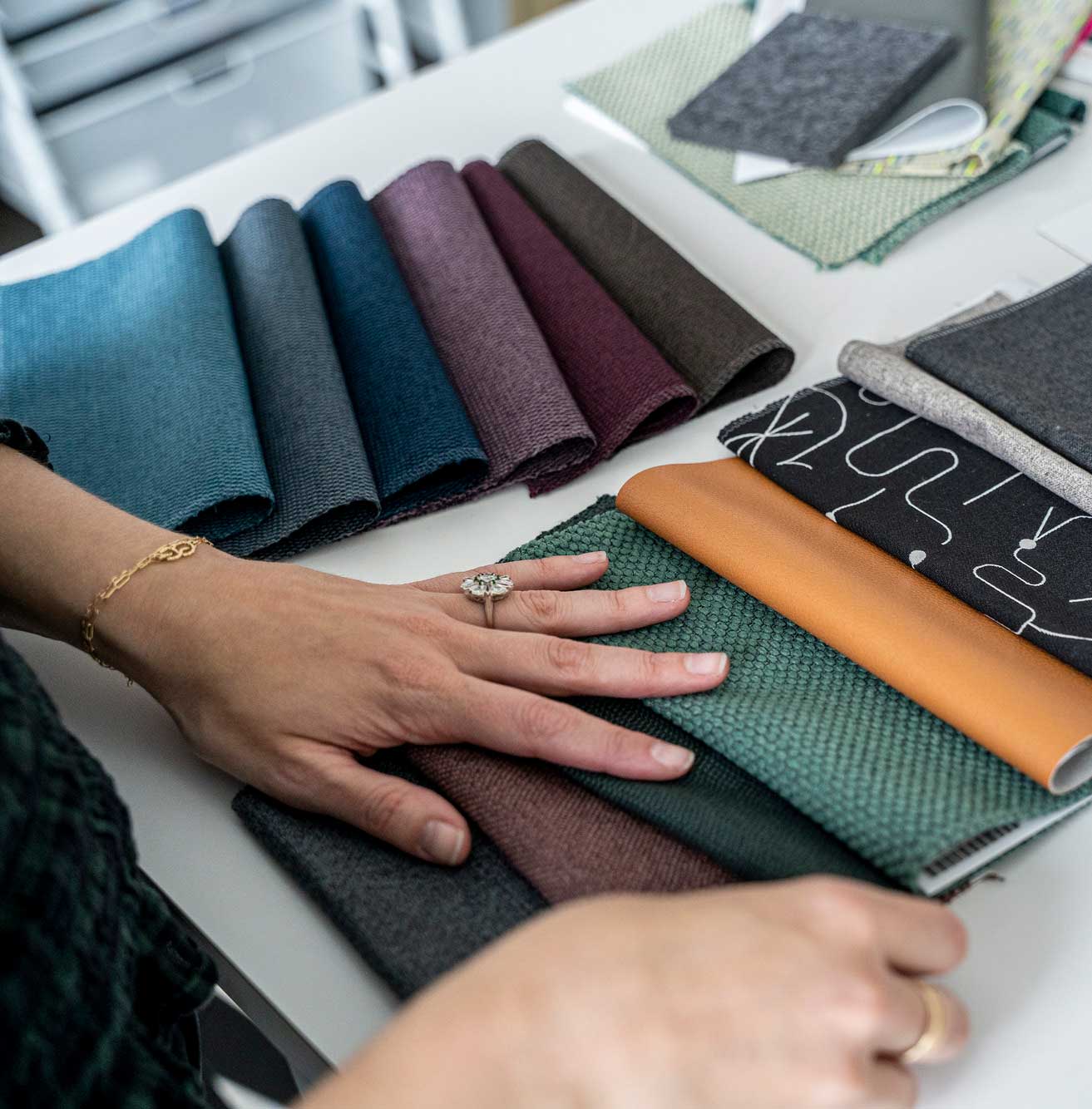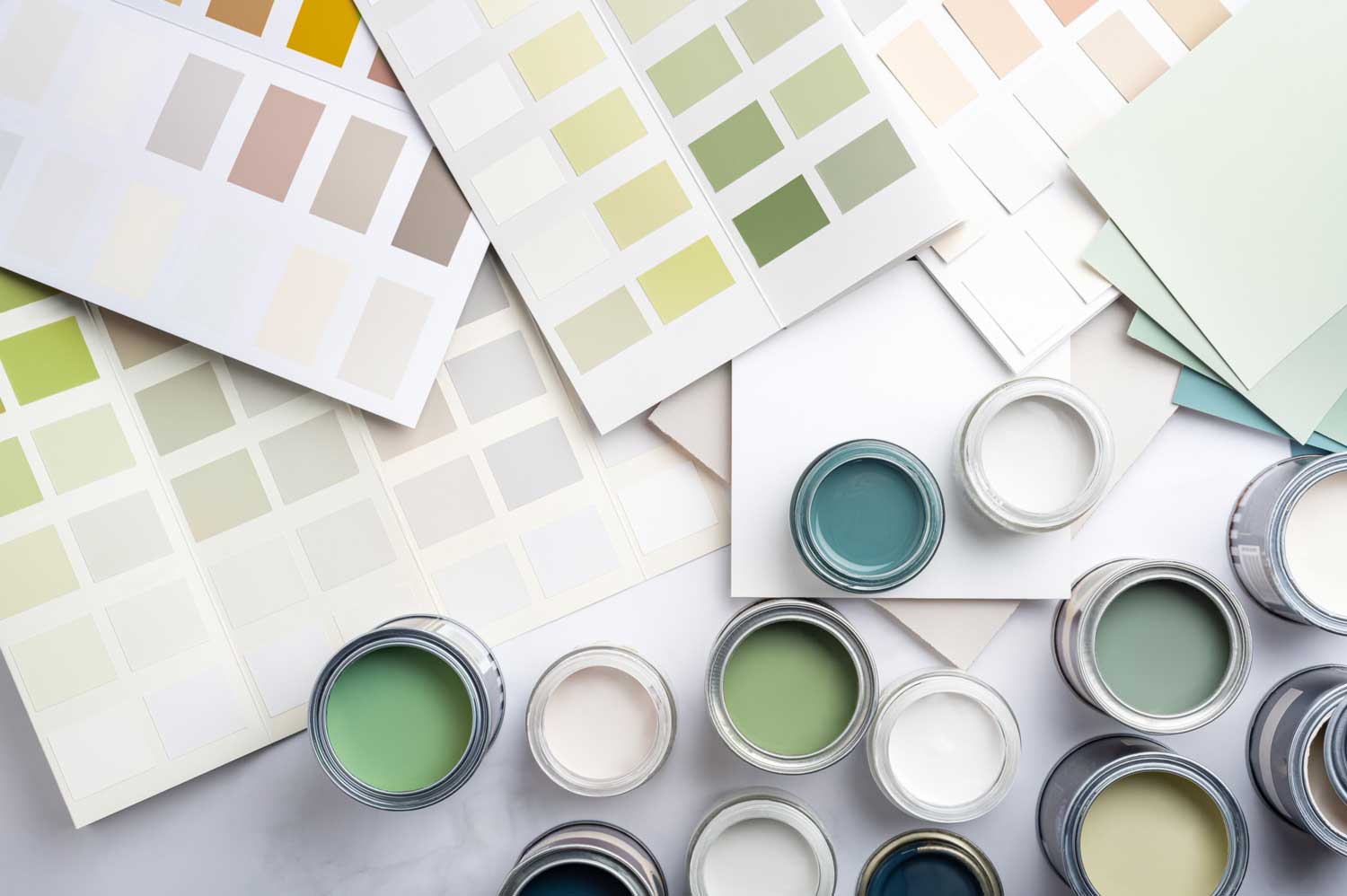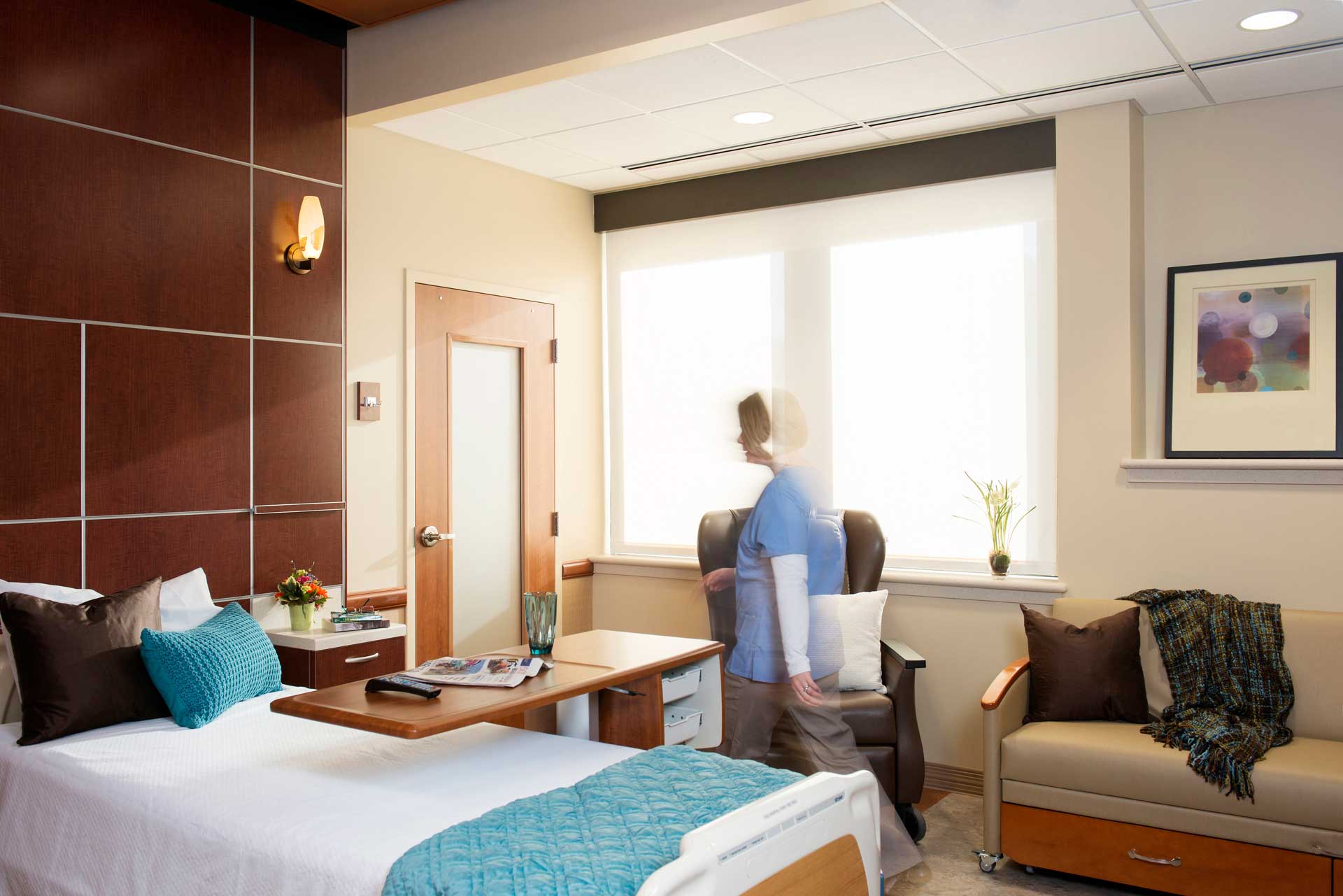Healthy Materials in Healthcare Facilities: How Interior Design Expertise Can Benefit Your Project
Interior design in the healthcare world can be complicated. There’s so much to consider and a lot at stake when it comes to ensuring the best possible environments — from the staff and practitioner perspective as well as the patient perspective. A knowledgeable interior design team is critical in helping healthcare clients understand what design options and material selections will work best for their facilities. To learn more about what goes into smart interior design decisions for healthcare clients, we spoke with Dawn Mackenzie — associate and senior interior designer with Cushing Terrell’s healthcare design studio.
How do you go about determining what materials are the best for the job?
First and foremost, we must fully understand the activities that will occur in each space — the types of practitioners, their workflows and related equipment; the maintenance protocols; and perhaps most importantly, how patients will experience the different spaces.
To ensure a successful project, it’s important to include interior design expertise early in the design process. The interior designer, along with the rest of the project team, will meet with the client, tour their facility, and begin the necessary research to really understand the project’s needs and goals. Establishing the client’s goals early on allows the design team to stay focused and present the best solutions.
Additionally, we’re always learning from our own project teams and past projects through tools such as post occupancy evaluations, as well as industry research from organizations such as the Center for Health Design. These evidence-based resources are incredibly valuable to both Cushing Terrell and our clients. They allow us to evaluate what works and what doesn’t work in the real world.

A fun way that we keep up on the latest products, materials, and innovations is through our relationships with product manufacturers. Yes, this is a sales space, but it’s a very knowledgeable sales space. Having consistent manufacturer reps who know you and your clients greatly aide in the decision-making process. It’s also critical to work with established manufacturers who are represented and performing well where a project is located. This is particularly important for smaller, more rural health systems. Knowing they have the support of a particular vendor or supplier is huge in terms of their confidence in the products and process.
A good manufacturer’s rep will want our projects to be successful just as much as we do. These relationships also provide an alternate way to strategize and work together as a group to ensure products and materials will not only look good but will function well and be long-lasting.
Finally, we engage in real-world testing. Whenever possible, we create mockups for the client’s staff to use and see how the products perform. For example, we’ve taken back-of-house corridors and mocked up flooring and walls to test how things hold up. This hands-on testing gives us another round of insights that we can apply to our work.
While it may seem like a no-brainer to use healthy materials in healthcare settings, what are some of the challenges you face and how do you overcome them?
The big challenge with healthcare spaces is finding products that perform well, align with established budgets, and provide human and environmental health benefits. It’s a balancing act in which we must consider the lifespan of the material in each environment with the goal of not having to replace materials as soon or as often as well as considerations such as off-gassing and the manufacturing process. Minimizing how often a flooring material needs to be replaced is imperative for reducing construction waste and keeping hospital operations running.
The good news is that we’ve been seeing a big industry shift with designers (and their clients) insisting on low-VOC (volatile organic compounds) and PVC (polyvinyl chloride)-free products. As this demand continues to grow, I hope to see even more manufacturers innovating in their processes to create products that are both healthy and durable. Coming up with durable zero-PVC flooring, for example, has been a challenge, but manufacturers are working through the issues and we’re seeing progress. If it happened with paint (zero-VOC paint is now the norm), it can happen with other products and materials.
In the meantime, we need to continue to be advocates and research each product’s lifecycle, so we can help our clients make the best decisions for their facilities, staff, and patients.

What are your strategies to specifying healthy materials while staying within budget?
This is where mindful MATERIALS (mM) comes in. The non-profit organization is dedicated to reducing, and ultimately reversing, the embodied impacts of the built environment through collective material choices. mM offers a cloud-based materials library where architecture and design professionals can discover and specify products that have human health and environmental benefits through a transparent listing of what each material is made of as well as the manufacturing process. Though mM is an excellent tool for transparency and information, it still requires the interior designers and architects on the project to be knowledgeable about what certifications and material ingredients mean in the durability and sustainability realm of our designs.
Our interior design teams have edited our libraries to only include materials listed in the mM library. The overall goal is to make better decisions and continue to push demand for responsible products and materials.

Do you find this is something you have to educate healthcare clients on, or is it something driven from the healthcare side that we’re learning to incorporate more into our designs?
Our role is to be trusted advisors for our clients and to make decisions as easy as possible for them. So, while our clients do have human health top of mind, they depend on us to deliver the design solutions. Healthcare entities understand the importance, but most likely will not have the knowledge of the materials, manufacturing process, or materials lifecycle. We also work with many regional, rural healthcare providers who have limited budgets and staff. Thus, it’s our responsibility to research, inform, and advise.
There so many things happening behind the scenes to give our clients a healthy building — from the HVAC and mechanical systems that impact indoor air quality to lighting and electrical systems that impact functionality and well-being. Our clients trust that we’ll use our whole project team’s multidisciplinary expertise to make the best choices for them so they can focus on their primary goal of treating their patients.
What are the primary materials/those most impactful to specify for a project? What makes the most impact on the overall space?
Ranked in order of importance from an interiors perspective are 1) flooring, 2) walls (wall protection and paint), 3) ceiling tiles, and 4) furniture. What’s encouraging about this list is that wall finishes and ceiling tiles are now very easy to specify in terms of finding what will work well (at all budget levels) and that are positive in terms of human and environmental impacts. With flooring and upholstery, progress has been made; however, those finishes see the most wear and tear throughout any healthcare facility. Manufacturers are still trying to figure out how to make those materials both sustainable and durable.
For example, carpet made from type 6,6 nylon was the gold standard for durability and stain resistance for decades. This type of nylon is not recyclable and is now no longer produced. Sounds like a good thing, right? I thought so too until I started to realize how good the carpet looked 10+ years later in some of my old projects vs. needing replacement after five years with a new yarn system. Sustainability can be defined in different ways. You don’t just meet the mark if your material can be recycled. Manufacturers are stepping up and realizing the performance still needs to be there as well. On the carpet front, many companies are going back to the drawing board to find a sustainable replacement for type 6,6 nylon with the same performance specifications.
This is the case with many materials used in healthcare spaces, carpet is just one example. But, there are all sorts of opportunities for innovations, and we’re excited for what we’ll see from the manufacturing industry.

What are your guiding principles as an interior designer?
The Interior Design Pledge for Positive Impact sums it up with three tenants:
Design for Climate: Interior design has a role in reversing the negative impacts of climate change by focusing on eliminating emissions, designing for adaptability and resilience, and reducing resource consumption while supporting a circular economy.
Design for Health: Both human and ecological health are essential components of a thriving society. Interior design must create spaces that support holistic health by focusing on the physical, mental, and emotional well-being of occupants, responsible material specifications, and protecting threatened ecosystems.
Design for Equity: Social and environmental equity play a vital role in the development of cohesive, safe, and resilient communities. Interior design should be an instrument for the integration of diverse populations by creating opportunities for community cohesion that address inclusion, accessibility, and fair trade.
Our firm and interior design team members are committed to the pledge and work together with our full project teams, sustainability experts, and clients to meet these tenants. The pledge was created by a collaboration of major associations, such as the American Society of Interior Designers, International Interior Design Association, and Interior Designers of Canada, with support from Metropolis magazine — all influential in the industry and beyond.
Is there a project story you’re really excited to tell?
Yes! The next blog post from one of our interior design team members, Elna Albano, will be about the new Neuro, Surgical, Trauma ICU at Saint Alphonsus Regional Medical Center in Boise, Idaho, so stay tuned for more. She’ll be diving into the design decisions that impact health and wellness in this new space — the challenges and the solutions delivered for this client, their staff, and patients.



